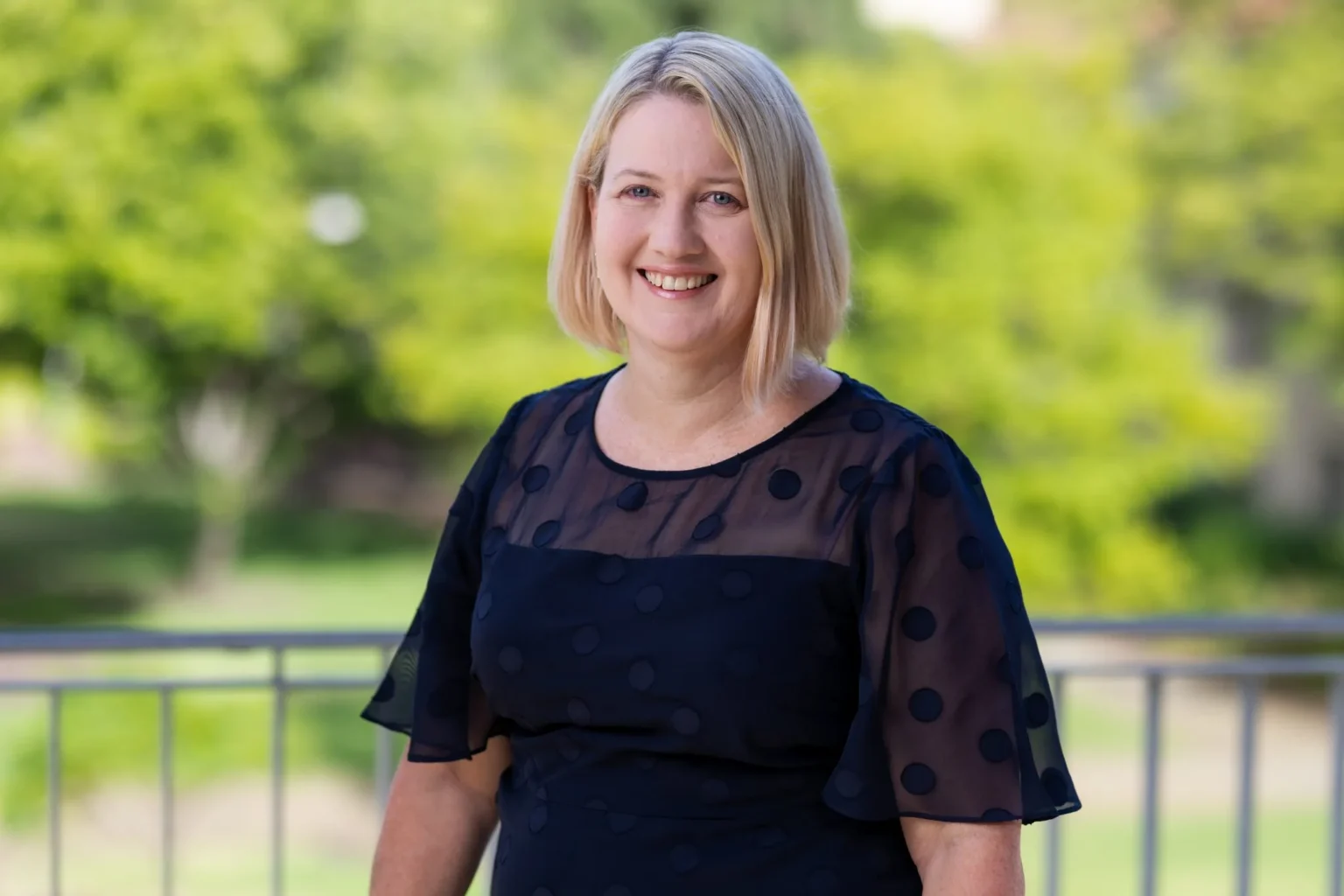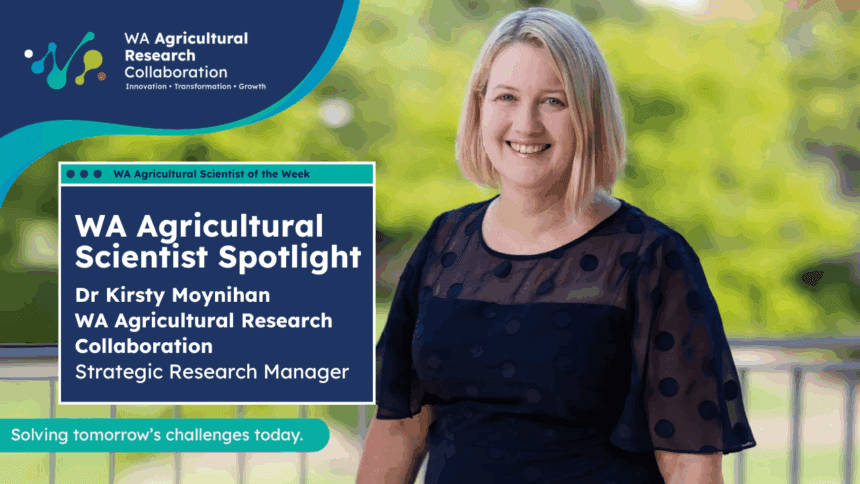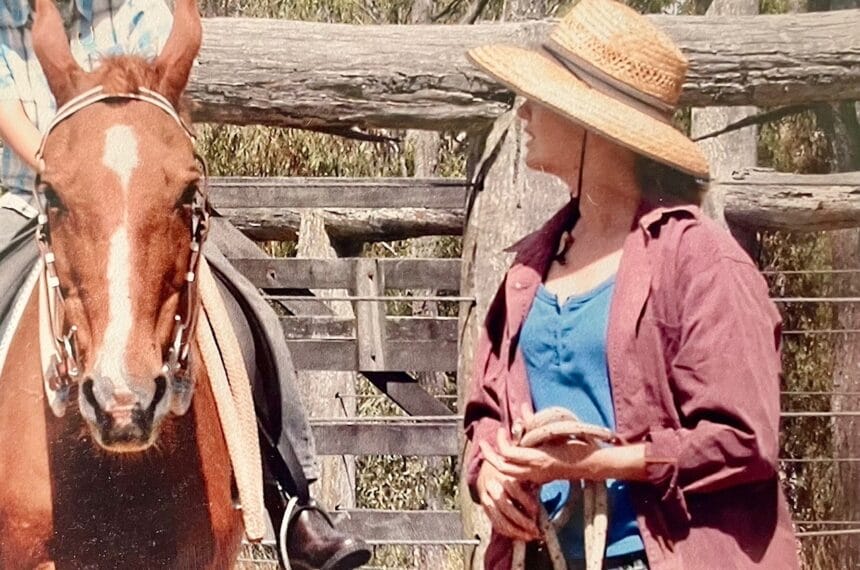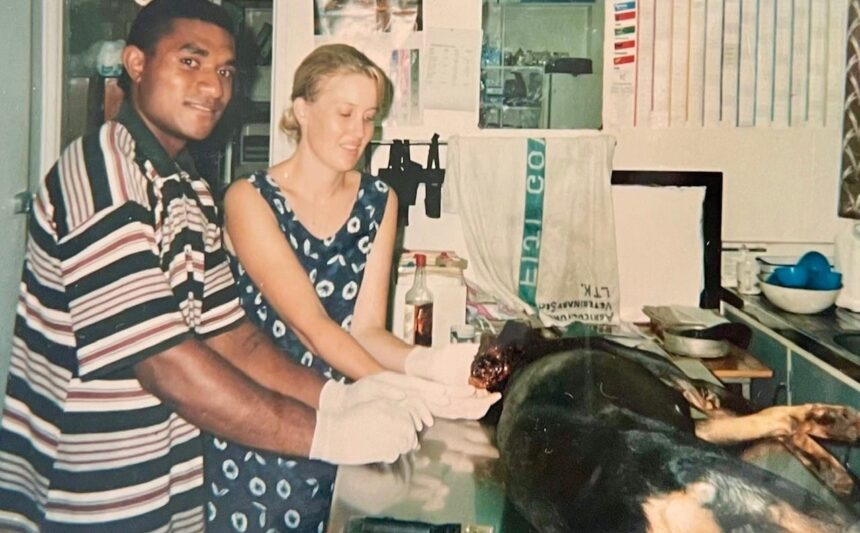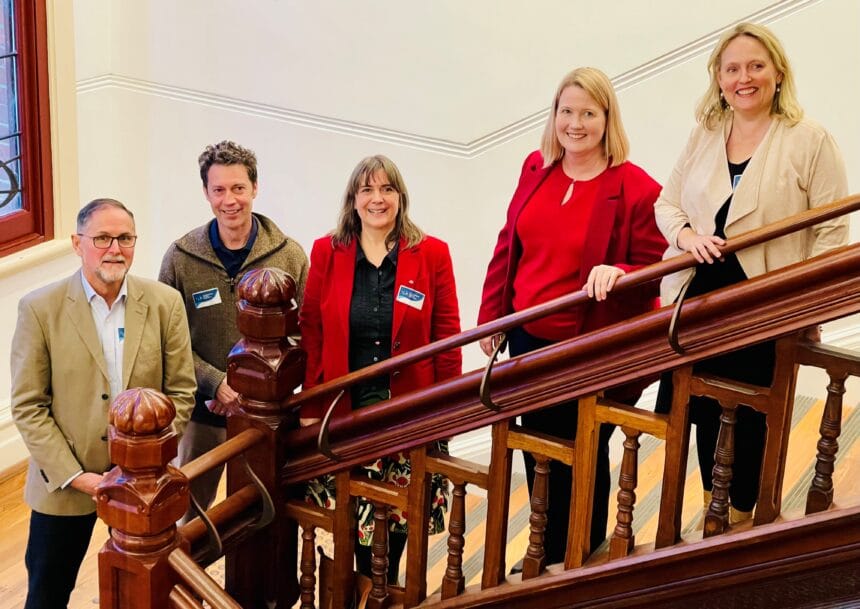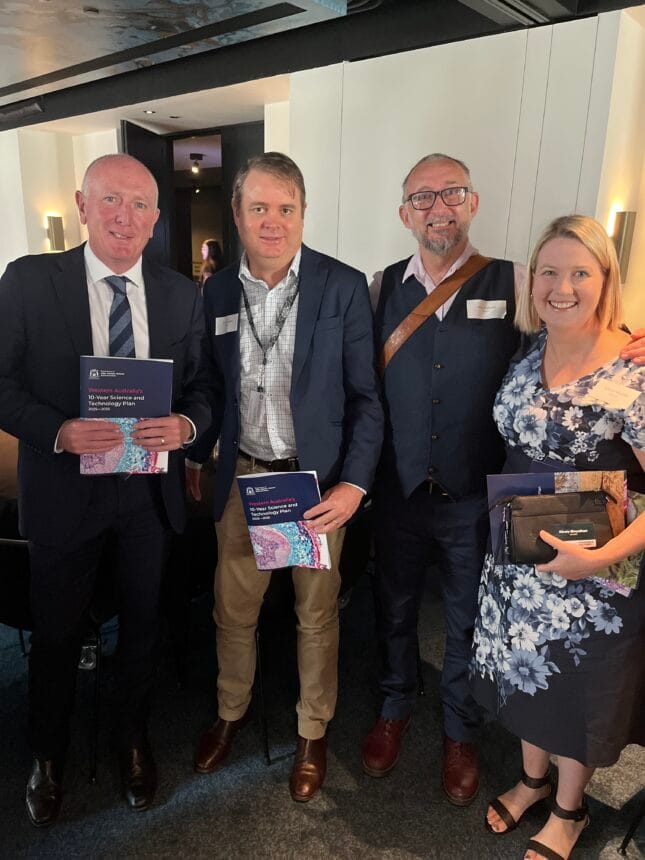Through the WA Agricultural Scientist Spotlight series, we share the career journeys, research, and personal insights of scientists shaping the future of food and farming in Western Australia.
This edition shines the spotlight on Dr Kirsty Moynihan, Strategic Research Manager at the WA Agricultural Research Collaboration (WAARC).
With a background that spans veterinary science, livestock biosecurity, government policy, and innovation leadership, Dr Moynihan brings a wealth of experience to her current role.
Her story is one of curiosity, adaptability, and a passion for building systems that protect and grow agriculture for the long term.
From veterinary science to agricultural research
Dr Moynihan’s connection to agriculture began long before university or government.
Growing up on her family’s beef cattle property in south-east Queensland, she developed an early familiarity with rural life and agricultural challenges.
“An agriculture-related career was always a strong possibility, and over time, my passion for protecting and growing the agriculture and food sector really developed,” Dr Moynihan said.
“I’ve always kept a diverse interest in science and innovation, but agriculture feels like home.”
Dr Moynihan began her professional journey as a veterinary scientist, graduating from the University of Queensland in 1994.
She initially worked in private practice before taking up a role with the Fiji Government as a volunteer development worker for two years.
While those years in veterinary practice were formative, she found herself increasingly drawn to the scientific questions behind animal health and agricultural systems.
This curiosity led her back to study, completing both a Master of Science and a PhD in livestock biosecurity at James Cook University.
“My PhD research focused on developing tools to better manage biosecurity risks,” Dr Moynihan said.
“I used GIS to create risk maps for Trypanosoma evansi, or Surra, a disease of livestock transmitted by biting flies, and the aim was to better target resources to higher-risk areas.
“Weather factors play a big role in insect abundance and distribution, so integrating climate data became central to the work.”
This breadth of experience – spanning science, strategy, and governance – would eventually bring Dr Moynihan full circle back to agriculture, this time with a mandate to shape its future direction.
A career in policy and innovation
After completing her doctorate, Dr Moynihan moved into government roles, joining the WA Department of Agriculture and Food (as it was then known) in biosecurity policy.
From there, her career evolved across animal welfare, emergency management, food industry innovation, and corporate strategy.
Later roles at the Department of the Premier and Cabinet, the Department of Jobs, Tourism, Science and Innovation, and the Animal Resources Centre broadened her scope further, taking her into science and innovation policy at a whole-of-government level.
“I wanted to find ways of implementing and improving decision-making systems through evidence-based information,” Dr Moynihan said.
“That’s essentially what policy is about – making sure science is not just produced, but applied in ways that matter.”
This drive to bridge science, strategy, and impact continues to define her work today.
Driving strategic research at WAARC
Today, Dr Moynihan brings this experience to her role as a Strategic Research Manager at WAARC.
Her work is centred on building and brokering collaborative projects, ensuring WAARC’s research portfolio addresses industry priorities, and supporting the adoption of new knowledge and technologies across Western Australia’s agricultural sector.
“On a typical day, I might be meeting with researchers to discuss their projects, identifying opportunities for co-funding, or brokering partnerships between WAARC members,” she explains.
“I’m also involved in student activities – from presentation sessions to capacity-building workshops – because building the next generation of agricultural researchers is something I find especially rewarding.”
Dr Moynihan also plays a critical role in strategic planning, working with members and partners to co-design priorities that align with WAARC’s mission.
Once projects are underway, she helps ensure outcomes remain on track and are communicated effectively, with a strong emphasis on extension and adoption.
Alongside her broader responsibilities, Dr Moynihan leads WAARC’s Resilient Agricultural Futures program.
This program focuses on supporting long-term regional resilience, sustainability, food security, and profitability across WA’s farming systems.
For Dr Moynihan, producing food profitably and sustainably in a warming, drying climate is one of the defining challenges of our time.
“We need to reshape production systems to maximise water efficiency, improve soil health, value natural capital, and accelerate progress towards net zero emissions,” she said.
Her program also oversees WAARC’s three projects on polyphagous shot-hole borer (PSHB) – an invasive pest with serious implications for agriculture and ecosystems.
“Our focus is on improving knowledge of this pest and developing tools for limiting its spread, alongside treatment and control options,” Dr Moynihan said.
“The findings will not only benefit WA, but also have national and potentially global significance.”
Inspiration and fulfilment
For Dr Moynihan, the greatest reward lies in the people she works alongside.
She is continually energised by the intelligence, creativity, and determination of those committed to advancing agriculture.
“I am endlessly inspired by the energy, intelligence and passion of people who work in agriculture,” she said.
“Being part of a sector that tackles challenges daily, and helping support solutions through research and collaboration, is a privilege.”
This sense of inspiration carries into the way she thinks about the next generation of agricultural scientists.
She sees agriculture and food research as a field brimming with opportunity – one where diverse interests and skills can find a home.
“There are so many pathways,” Dr Moynihan said.
“From studying consumer dietary preferences that shape markets, through to developing technology that improves production efficiency or reduces chemical use – agriculture touches everything.”
For her, research is most powerful when it combines curiosity with problem-solving and has a direct connection to the real-world challenges faced by farmers, industries, and communities.
“The best part about research is developing curiosity, connecting problem-solving to real-world challenges, and helping drive adoption of new solutions, Dr Moynihan said.
“That curiosity can take you in so many directions.”
Through her leadership at WAARC, Dr Moynihan is helping ensure agricultural research in WA is not only robust and collaborative, but also strategically positioned to address future challenges.
Her own career – bridging veterinary practice, scientific research, and policy innovation – reflects the integrated approach needed for agriculture to thrive.
Through the WA Agricultural Scientist Spotlight series, WAARC celebrates the contributions of researchers like Kirsty Moynihan, whose work exemplifies the dedication and innovation needed to advance agricultural science in Western Australia.
By sharing their stories, the series aims to inspire a new generation to pursue careers in this vital field, ensuring the State remains at the forefront of agricultural research and sustainability.

